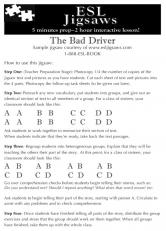ESL Jigsaws
5 Minutes Prep - 2 Hour Interactive Lesson!
Viewing entries tagged with 'free material'
Field Testing Callan's Beginner Essentials
Field testing will be completed circa May 1, 2018.
Teaching About Christmas?
Imagine you are teaching abroad for a year in the country of Slavarnia, spending part of your time in classes learning the language of Slavar. It's not a real country so follow along with this hypothetical example. The biggest holiday of the year is called Glistin. Stores close and there are two statutory holidays associated. Hallmark has commercialized Glistin significantly, creating a large gift giving fairy as the main character. But actually, the roots of the holiday are religious. When the subject of the holiday comes up in class, you read and played games centred around the Hallmark fairy, but learn nothing about the historical and religious origins of the holiday. Apparently, the school is concerned about religious proselytizing and so keeps the focus on the secular aspects. As a result, you remain in the dark about half of the holiday's significance. You have no interest in converting your religion, but just want to understand what is behind the holiday.
Low Beginner Personal Info Game
Anyone who teaches very low beginner ESL knows that you spend a lot of time going over basic personal information questions and answers, often trying to come up with yet another new way to approach the same old material.
Teaching Family to Level One
Were you aware that not all languages use the same one word for father's sister and mother's sister the way English uses aunt? Likewise, many languages have different words for the grandmother from your father's side and the grandmother from your mother's side. Learning about these differences in nomenclature makes teaching a family unit in an ESL classroom an interesting experience.


